Blog
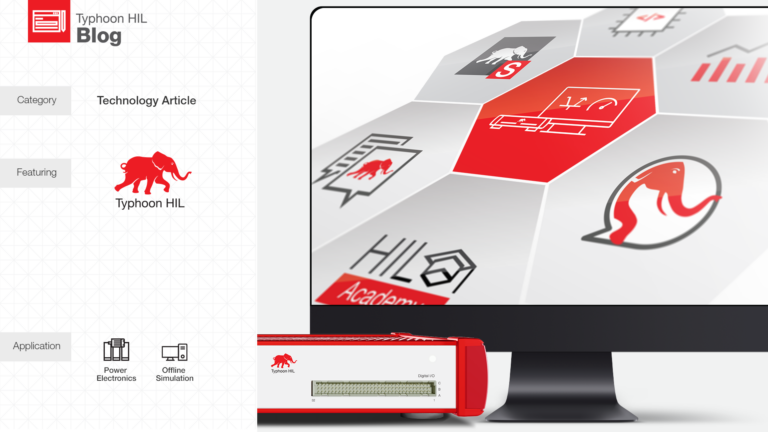
Accelerating Controller Development with Model-Based Engineering
April 3, 2025
Traditional controller development often relies on late-stage testing, leading to costly delays should design flaws emerge. Model-based engineering revolutionizes this process by enabling simulation, validation, and continuous testing from the very beginning. With Typhoon HIL’s fully integrated toolchain, engineers can design, test, and refine controllers, seamlessly transitioning from virtual offline sim…
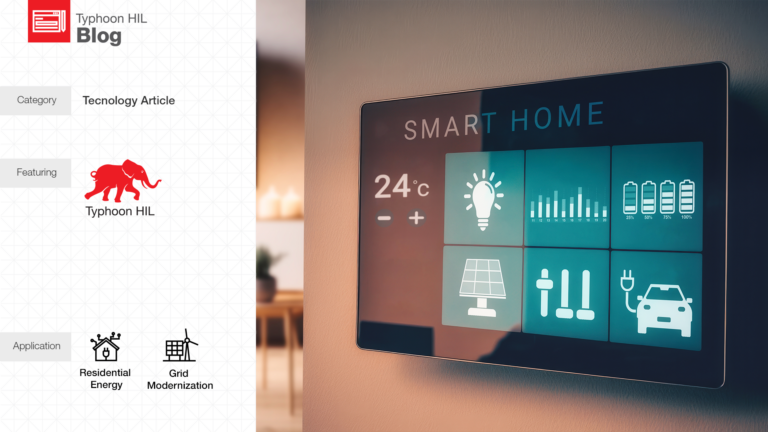
How Smart Buildings Drive Energy Efficiency and Sustainability in Modern Communities
January 30, 2025
Smart buildings are revolutionizing the way we approach energy efficiency and sustainability. By combining passive design with intelligent control systems, these structures optimize energy use, integrate renewable sources, and may even produce and share energy within community microgrids. As electricity consumption in building operations represents nearly 55% of global electricity consumption, smart energy …
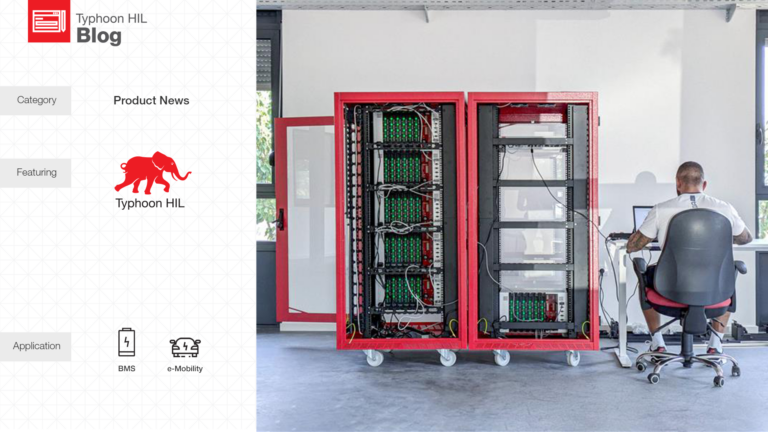
Unlocking Efficiency: Battery Management System Testing Solutions
January 15, 2025
In the dynamic world of electric vehicles, battery management systems (BMS) are pivotal for safety and efficiency. Typhoon HIL’s BMS HIL Testbed introduces a groundbreaking approach to testing, using high-fidelity simulations to validate SoC, SoH, and fault responses in real time. By addressing complex challenges, our solution empowers engineers to develop safer, more reliable BMS designs while reducing t…
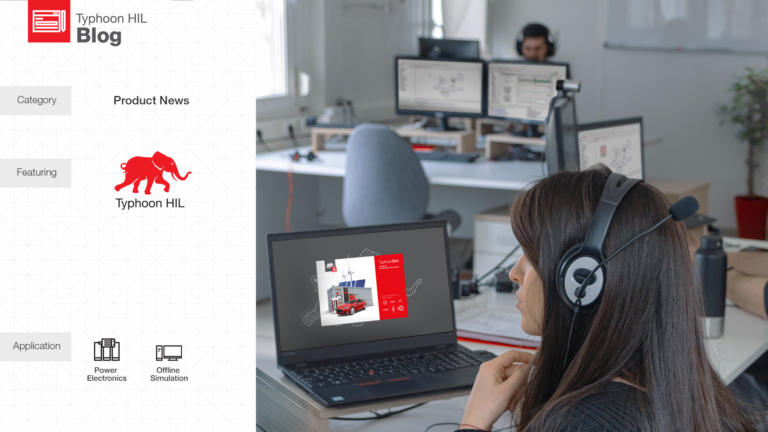
From Offline to Hardware-in-the-Loop Simulation Seamlessly: Introducing TyphoonSim
December 18, 2024
TyphoonSim’s integration into the Typhoon HIL Control Center creates a unified toolchain for offline and real-time simulation. Power electronics and power systems engineers can now seamlessly transition from the design phase to HIL testing and back, streamlining workflows, enhancing precision, and accelerating project and research timelines.
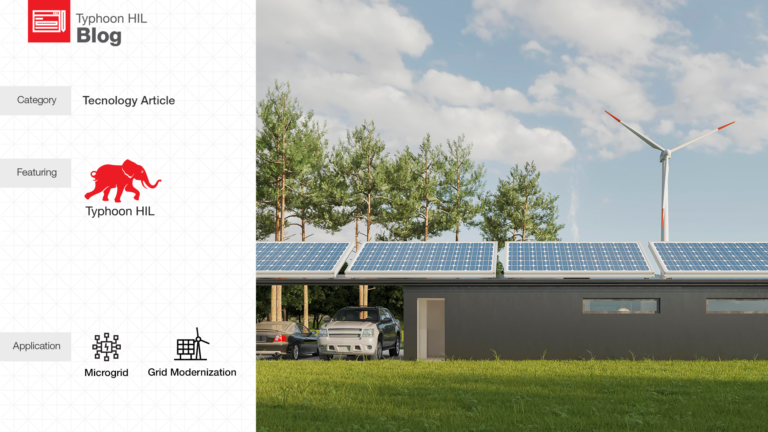
Mastering Microgrid Control Testing: Innovations for a Sustainable Future
December 13, 2024
Microgrids and distributed energy resources are critical to a sustainable energy future, but their complexity demands advanced control strategies and rigorous testing. Explore how cutting-edge HIL simulation tools and hybrid control approaches are simplifying microgrid management, improving stability, and enabling seamless integration of renewable energy sources for a greener tomorrow. Read the full blog to…
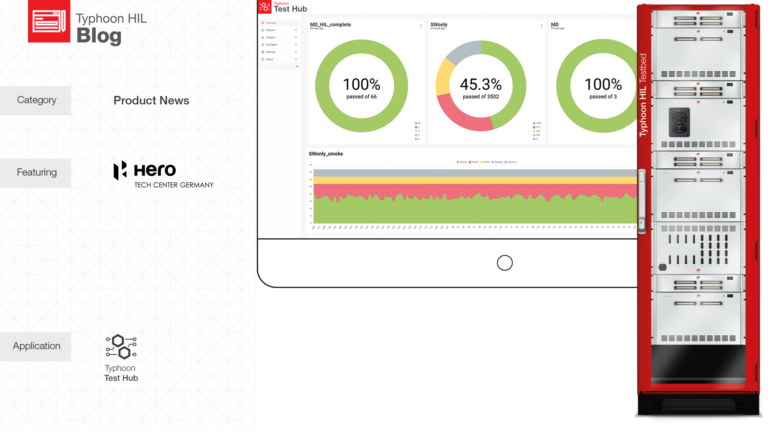
Typhoon Test Hub: Integrated Automation for Streamlined HIL Testing
November 13, 2024
Typhoon Test Hub is transforming HIL testing by minimizing the initial effort needed to gain the advantages of test automation. HERO Tech Center Germany leveraged it for scalable test automation, enhancing coverage and identifying specification gaps early. This approach improved efficiency, test completeness, and reporting. Read the full blog to discover how Typhoon Test Hub can elevate your testing process…

Why Clocks Matter: Exploring Their Critical Role in Power Grid Operations
October 31, 2024
Discover how Henry E. Warren’s invention of the master station clock revolutionized power grid frequency regulation, paving the way for interconnected grids that power the world today. Learn more about the history and lasting impact of this groundbreaking innovation, along with how HIL global time synchronization is implemented in the Typhoon HIL environment, in this blog article.

Optimizing e-Drive ECU Testing with Comprehensive Turnkey HIL Solutions
October 17, 2024
In the fast-evolving world of e-Drive ECU testing for electrified vehicles, comprehensive turnkey HIL solutions are key to optimizing performance and ensuring system reliability. Through expert panel discussions, live demos, and an interactive Q&A session, Typhoon HIL’s recent webinar shed light on the challenges and innovations in this space. Discover more about how these e-Drive HIL testing solutions can …
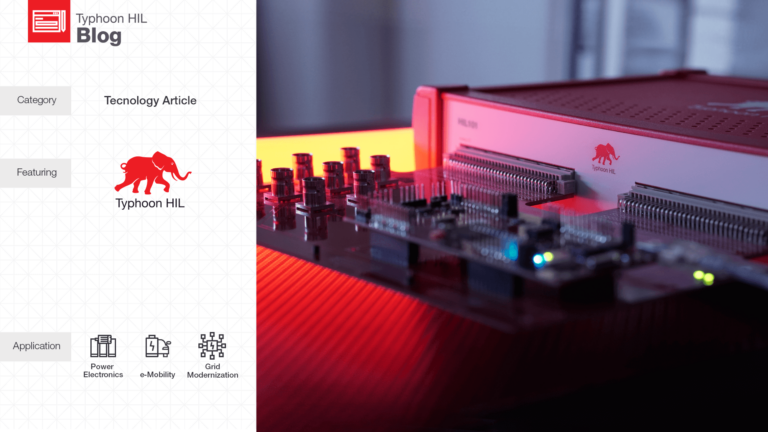
What is Controller Hardware-In-The-Loop Simulation, or C-HIL?
September 19, 2024
Controller Hardware-in-the-Loop (C-HIL) simulation is a powerful methodology for testing power electronics control systems. It creates a dynamic testing environment where the real controller (device under test) interacts with a high-fidelity, real-time simulation of the plant, allowing engineers to test scenarios that would be too expensive or dangerous to recreate in a physical lab. By reducing costs, impr…

Testing Digital Substations: Advancements with Hardware-in-the-Loop Technology
September 4, 2024
Advancements in Hardware-in-the-Loop (HIL) technology are revolutionizing the testing and lifecycle maintenance of digital substations, offering significant improvements in efficiency, reliability, and safety. By integrating real-time simulation with substation components, HIL systems enable comprehensive testing of protection schemes, effective and safe training for engineers, and seamless integration with…
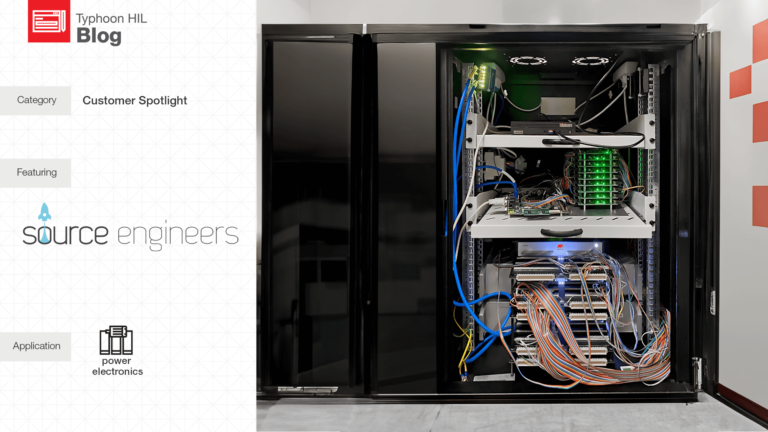
Software Test Setup for a Mass Spectrometer for NASA’s Commercial Lunar Payload Services Program
August 28, 2024
Discover how Source Engineers, in collaboration with the European Space Agency and the University of Bern, is developing firmware for the “Laser Ablation Ionization Mass Spectrometer” using Typhoon HIL’s HIL404 real-time simulation device. Learn about the rapid prototyping strategy that accelerates development and ensures high-quality firmware for this payload part of the Commercial Lunar Payload Servic…
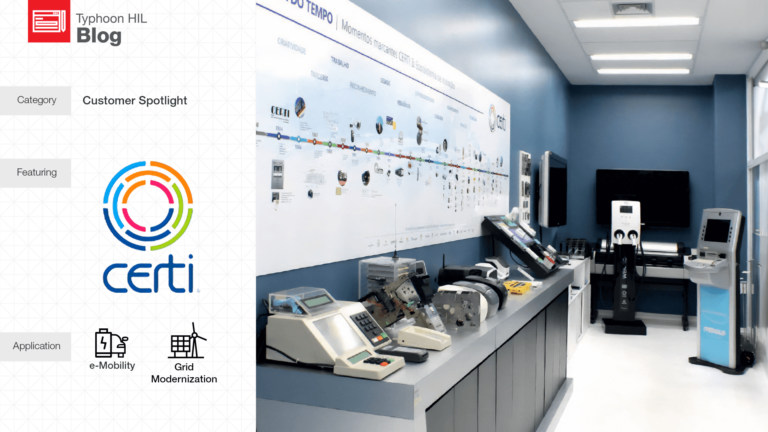
Leading Microgrid and e-Mobility Innovation with HIL
August 23, 2024
Microgrids and e-Mobility are revolutionizing the energy sector by enhancing efficiency, reducing costs, and ensuring system reliability. The CERTI Foundation, in collaboration with Typhoon HIL, is leading these innovations with cutting-edge real-time simulation and digitalization. Their work is crucial in shaping a sustainable and resilient energy future. Discover more about these transformative advancemen…
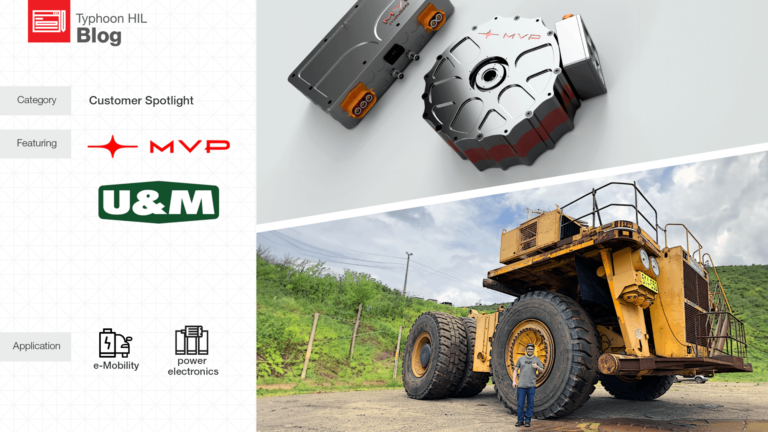
Hybrid Mining Truck 1.2 MW DC-DC Converter HIL Validation
August 19, 2024
In Brazil, engineers from MVP e-Solutions and U&M Mineração e Construção collaborated to advance the hybridization of a massive 186-ton mining truck using Typhoon HIL technology. This innovative simulation platform allowed them to meticulously model and analyze the interactions between the truck’s electric motors, battery pack, and DC-DC converter dynamics. The project represents a significant leap forw…
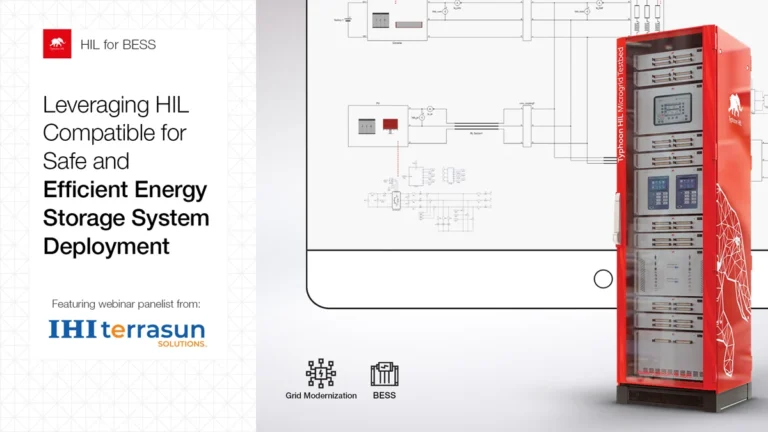
Leveraging HIL Compatible for Safe and Efficient Energy Storage System Deployment
June 13, 2024
In our recent webinar session with IHI Terrasun, we explored how HIL Compatible solutions enhance the reliability and performance of their energy storage projects. They shared how they leverage Hardware-in-the-Loop (HIL) technology to safely and efficiently deploy battery energy storage systems (BESS). Through this blog article, gain valuable knowledge from industry experts and discover how innovative HIL d…
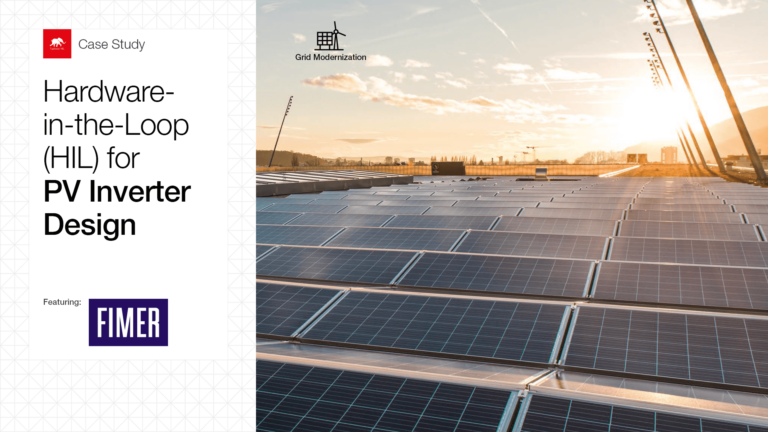
Hardware-in-the-Loop (HIL) for PV Inverter Design
April 3, 2024
Have you ever wondered how engineers test and perfect the control systems behind photovoltaic inverters? This blog article, written by the Chief Technology Officer at Fimer S.p.A. dives into the world of Hardware-in-the-Loop (HIL) systems, a powerful tool that creates a safe and controlled environment to simulate real-world scenarios for inverter control boards. HIL systems not only accelerate development c…
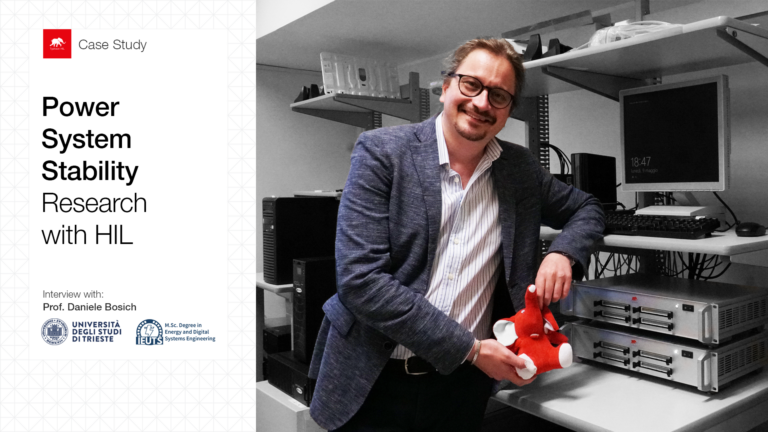
Power System Stability Research with HIL at the University of Trieste
March 25, 2024
This blog article explores the research of Prof. Daniele Bosich from the University of Trieste in Italy, focusing on his group’s work on DC system stability using Hardware-in-the-Loop (HIL) simulation. It delves into the challenges, solutions, and advantages of using Typhoon HIL for research, education, and industry collaboration in power systems.
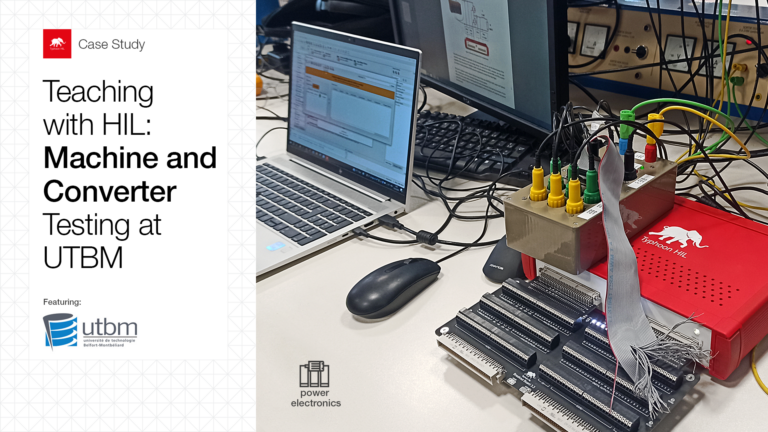
Teaching with HIL: Machine and Converter Testing at UTBM
February 22, 2024
At the University of Technology of Belfort-Montbéliard (UTBM) in Belfort, France, energy and electric engineering students use Typhoon HIL to control a multi-purpose laboratory bench, containing different types of machines and converters. In the context of a student project, students contributed to the application of a Typhoon HIL HIL402 system with the goal of controlling the multi-purpose platform. Learn…
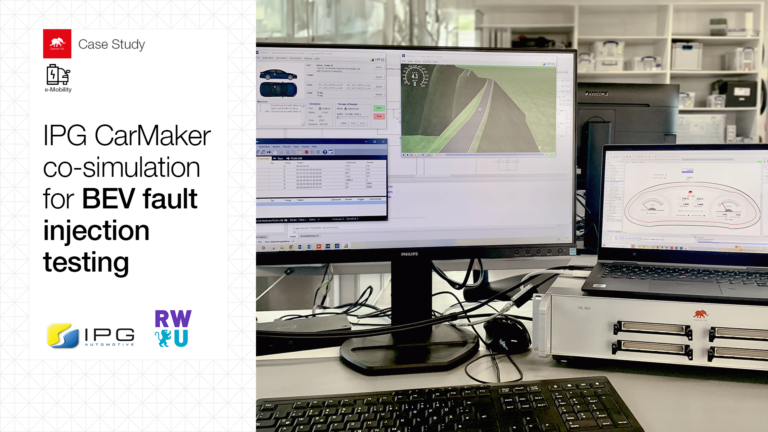
IPG CarMaker Co-Simulation for BEV Fault Injection Testing
February 7, 2024
This blog article outlines the co-simulation between IPG CarMaker and Typhoon HIL, detailing how the fusion of high-frequency real-time simulations on Typhoon HIL and precise vehicle dynamics simulations in CarMaker introduces new functionalities. The co-simulation model, including a detailed battery and BMS model, is utilized for Fault Injection Testing according to ISO 26262 standards for functional safet…
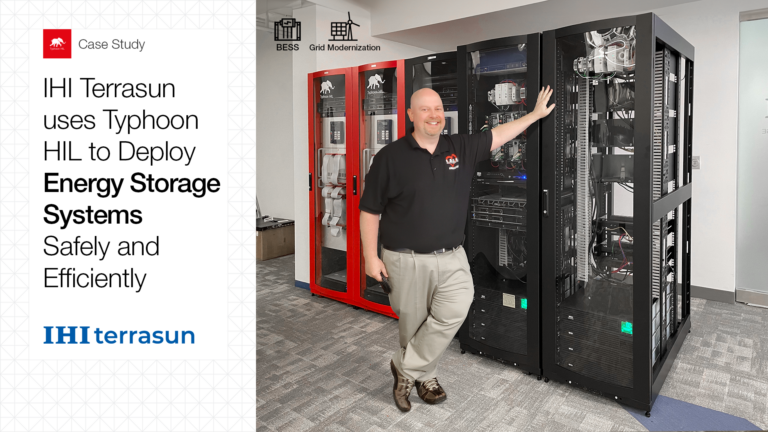
IHI Terrasun uses Typhoon HIL to Deploy Energy Storage Systems Safely and Efficiently
January 17, 2024
In this blog article, learn how IHI Terrasun, a battery and inverter agnostic battery energy storage system (BESS) integrator, uses Typhoon HIL’s C-HIL solutions to test and ensure seamless integration of their energy storage systems before deployment. This proactive testing minimizes risks, accelerates commissioning, and ensures consistency, boosting customer confidence and project efficiency. Furthermore,…
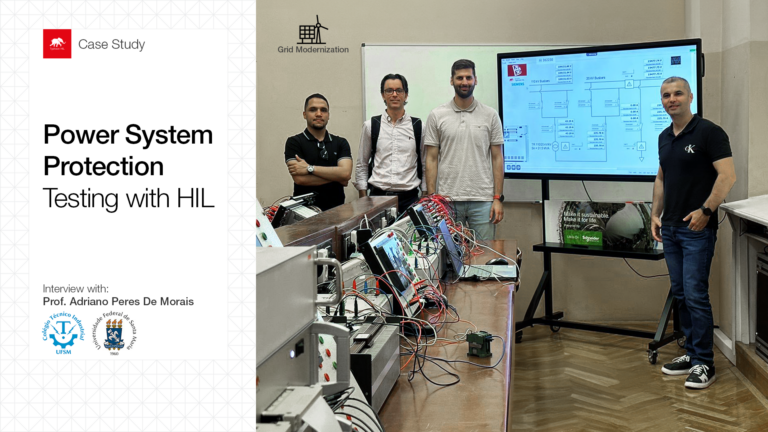
Power System Protection Testing with HIL
January 10, 2024
This blog article delves into the world of power system protection testing using Hardware-in-the-Loop (HIL) simulation, as presented by Prof. Adriano Peres de Morais from the Federal University of Santa Maria (UFSM) in Brazil. Prof. Adriano, a leading researcher in power system protection and an advocate for HIL technology, shares his insights and experiences using Typhoon HIL in his research and teaching a…
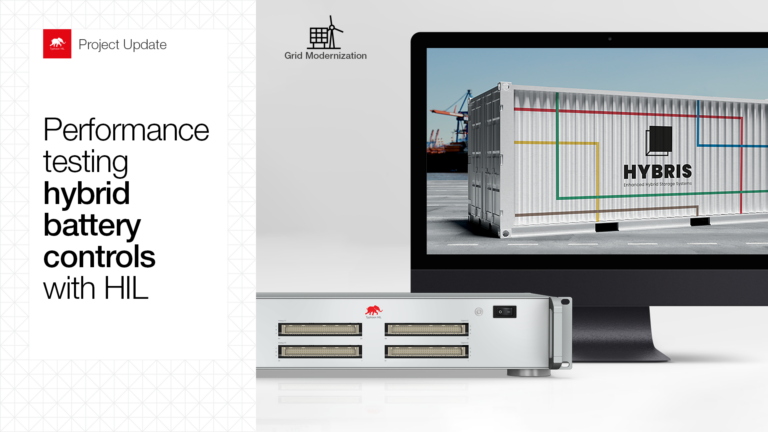
Performance Testing Hybrid Battery Controls with HIL
November 29, 2023
Ensuring safe and optimized operation of novel hybrid battery technologies is difficult, particularly when developing a first demonstration prototype. This blog shows how a digital twin model of the integrated Amorphous Organic Redox-Flow Battery (AORFB) and Lithium Titanate (LTO) battery container in the HYBRIS project is used to develop and train Energy Management System (EMS) controls considering real si…
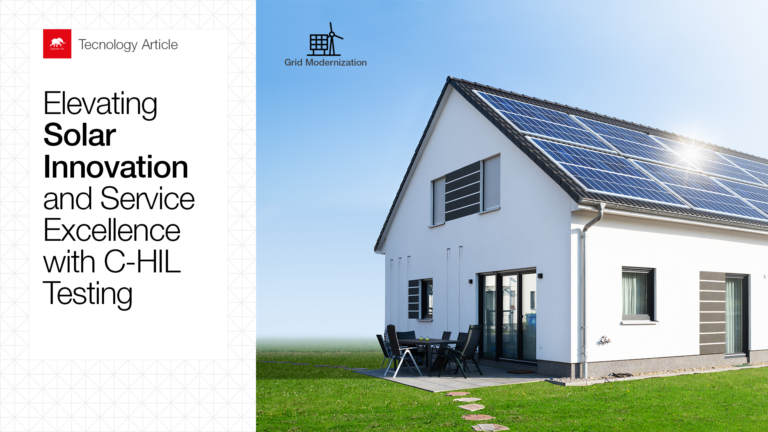
Elevating Solar Innovation and Service Excellence with C-HIL Testing
November 15, 2023
In this blog article, we share an overview on how Controller Hardware-in-the-Loop (C-HIL) real-time testing solutions support the mission of innovation and service excellence in the solar energy market. With its role in energy transformation overall, C-HIL testing can make immense impact on the development speed, reliability assurance, and evolution of customer service within this sector. See where our vert…
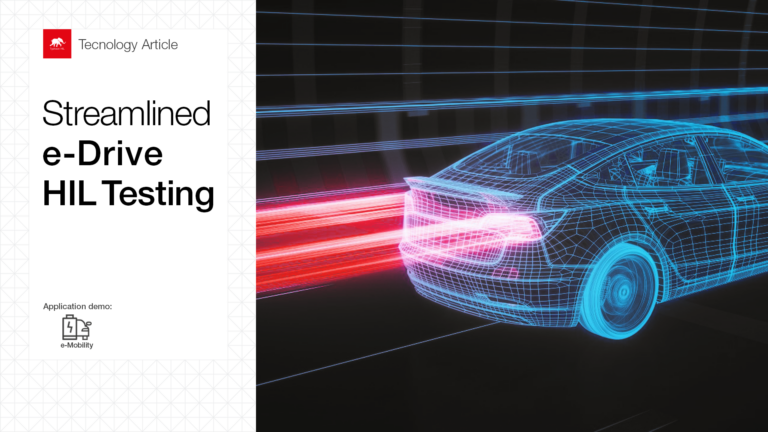
Streamlined e-Drive HIL Testing
November 8, 2023
In the rapidly evolving landscape of electric vehicles (EVs), ensuring the reliability of electronic control units (ECUs) is critical to guarantee the drivers’ safety. Robust and continuous testing offers a future-proof solution to this challenge. Specialized testing benches, real-time simulation, and advanced modeling tools provide a complete approach to ECU testing. With the integration of fault insertion…
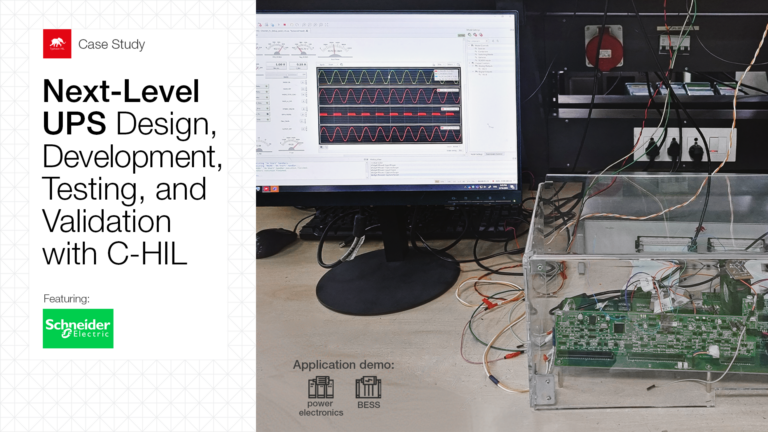
Next-Level UPS Design, Development, Testing, and Validation with C-HIL
October 18, 2023
This blog article is covering the story from the Schneider Electric Smart UPS Online C-HIL Core Team, where they outline the primary obstacles usually encountered in UPS design, development, and testing, as well as what a C-HIL setup brings when it comes to UPS testing. They shared what HIL benefits did the Schneider Electric Single-Phase UPS Team experienced first-hand and how the real time C-HIL solutions…
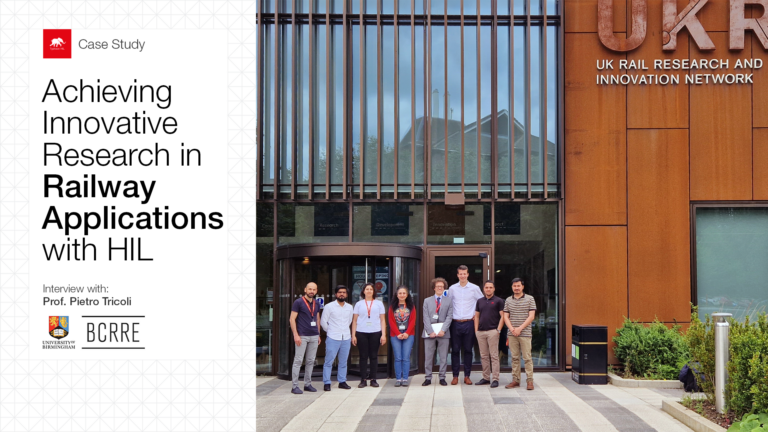
Achieving Innovative Research in Railway Applications with HIL
October 11, 2023
In this blog article, learn more about the pioneering work in power electronics of Prof. Pietro Tricoli’s Power Electronics Group at the Birmingham Centre for Railway Research and Education (BCRRE) at University of Birmingham, which is part of the UK Rail Research and Innovation Network (UKRRIN).
See how their group leans onto industry-academia collaboration to produce innovative research results, transfer…
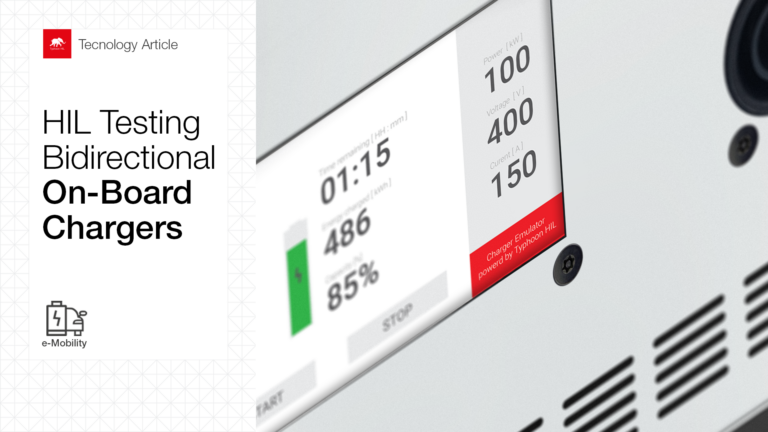
HIL Testing Bidirectional On-Board Chargers
September 27, 2023
Bidirectional onboard chargers (OBCs) are a key driving force behind the growth of Vehicle-to-Grid (V2G) applications, playing a pivotal role in balancing energy supply and demand. This blog explores the critical aspects of bidirectional OBCs and highlights the significance of HIL testing in ensuring their seamless integration and optimal performance.
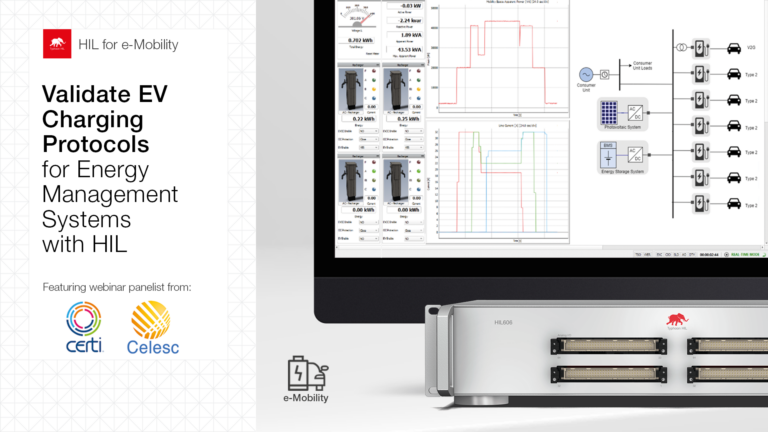
Validate EV Charging Protocols for Energy Management Systems with HIL
August 16, 2023
In recent years, national economies worldwide have been constructing efforts to make their development more sustainable, which involves the electrification of transport. In the process of developing safe and cost-effective charging infrastructure for electric vehicles (EVs), validation of charging communication protocols will play a key role. We reached out to CERTI Foundation to learn more about their rece…
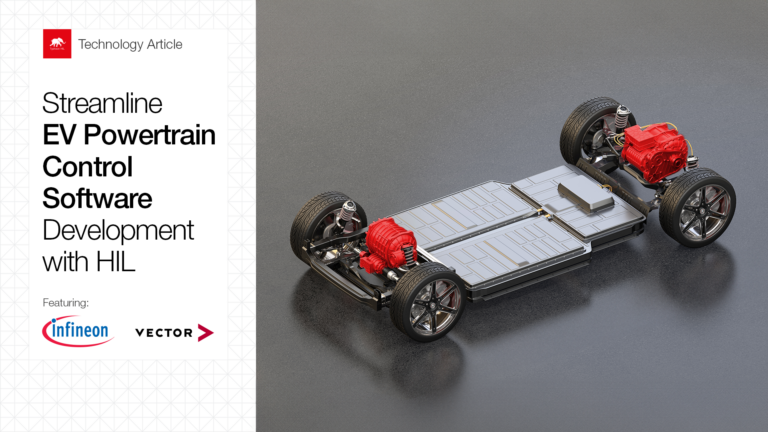
Streamline EV Powertrain Control Software Development with HIL
August 2, 2023
Developing control software for EV powertrain controllers involves crucial stages such as defining requirements, designing, testing, and validating the control software interacting with each powertrain component. However, waiting until the end of the development process for testing can increase costs if faults are detected late.
This new blog explores how the combination of Infineon, Vector, and Typhoon HI…
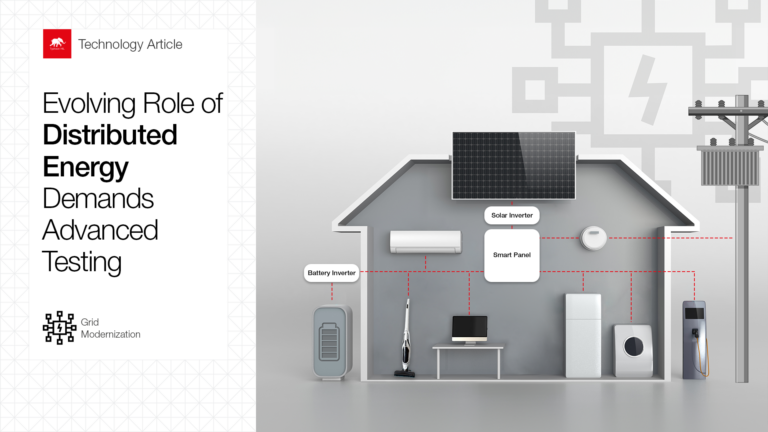
Evolving Role of Distributed Energy Demands Advanced Testing
July 26, 2023
Thanks to technological advancements and economic trends, demand for sustainable energy and energy resilience in homes has risen significantly over the past decade. An increasing number of homeowners have acquired distributed energy resources (DERs) such as solar power and energy storage. The move to residential DERs represents a profound shift in how energy resources are viewed and managed. In this blog ar…
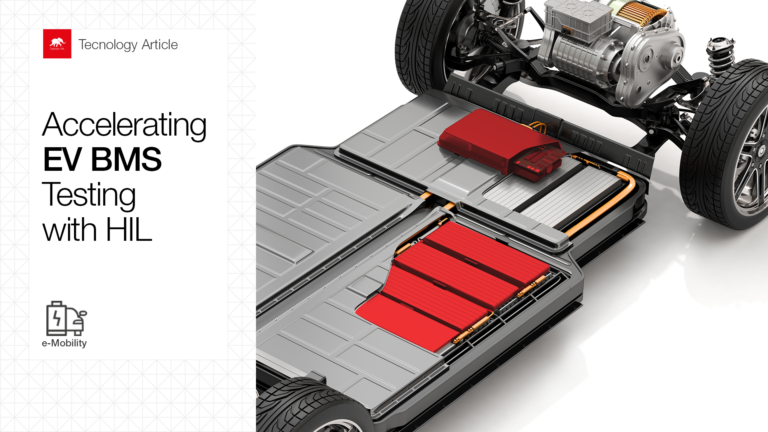
Accelerating EV BMS Testing with HIL
July 12, 2023
BMS testing is crucial for EVs, as it ensures safe and efficient battery usage. However, it also raises multiple engineering challenges, such as testing against diverse scenarios and charging cycles, detecting failures, and improving communication. HIL solutions such as Typhoon HIL offer accurate emulation, cost savings, and increased safety for control testing. By leveraging virtual models and cloud comput…
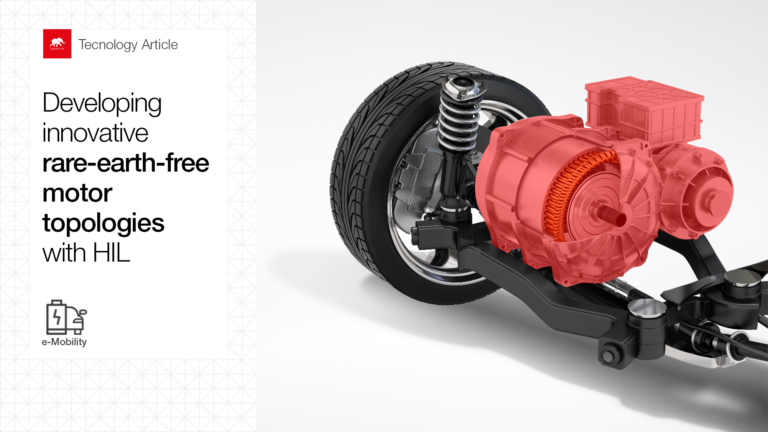
Developing Innovative Rare-Earth-Free Motor Topologies with HIL
June 21, 2023
Permanent magnet (PM) motors, using heavy rare-earth elements like Neodymium, Terbium, and Dysprosium, have been the go to choice for electric vehicle (EV) motors due to their efficiency and power density. However, complex extraction processes and limited supply chains have led to price volatility. To overcome these challenges, the e-Mobility industry is increasingly focusing on developing rare-earth-free e…
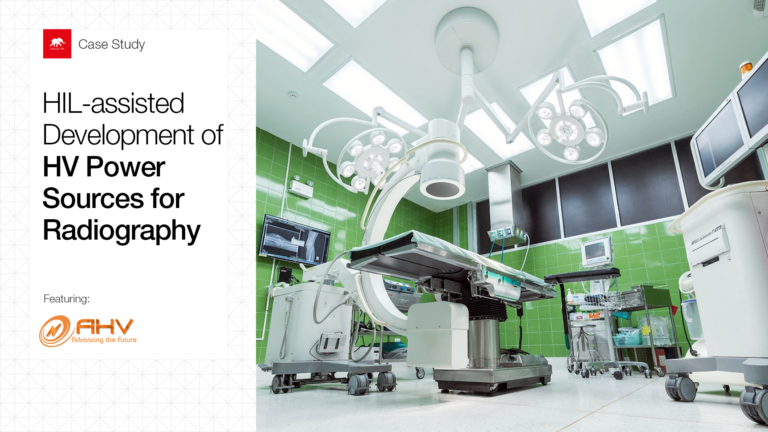
HIL-assisted Development of HV Power Sources for Radiography
May 31, 2023
The latest developments in the X-ray medical imaging help improve diagnostic capabilities while reducing costs. X-ray generators need to keep up with the challenges imposed by new semiconductor and software technologies. Time and complexity of a “full-digital” X-ray generator development are significantly reduced by using HIL instead of a complex setup of X-ray tubes, high voltage sources, power loads a…
{{text}}